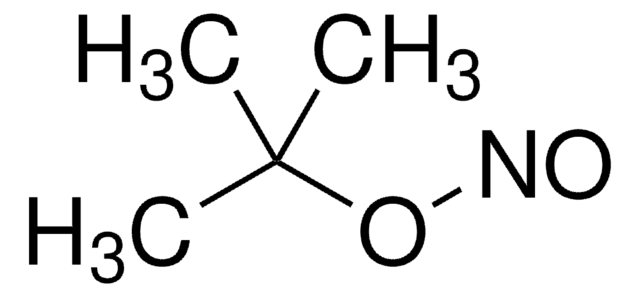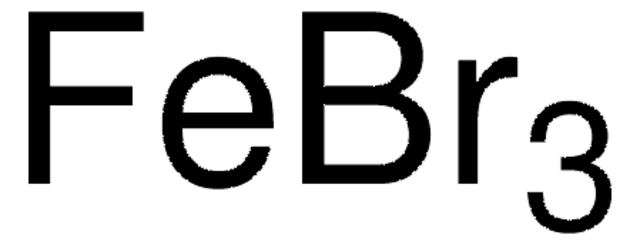221775
Copper(II) bromide
99%
Synonym(s):
brominating agent, Cupric bromide
About This Item
Recommended Products
Quality Level
Assay
99%
form
solid
reaction suitability
core: copper
reagent type: catalyst
mp
498 °C (lit.)
density
4.77 g/mL at 25 °C (lit.)
SMILES string
Br[Cu]Br
InChI
1S/2BrH.Cu/h2*1H;/q;;+2/p-2
InChI key
QTMDXZNDVAMKGV-UHFFFAOYSA-L
Looking for similar products? Visit Product Comparison Guide
General description
Application
- catalyst in cross coupling reactions.
- co-catalyst in Sonogashira coupling.
- Lewis acid in enantioselective addition of alkynes.
- reducing agent, when complexed by three molecules of pyridine initiators for the controlled polymerization of styrene, methyl acrylate and methyl methacrylate.
Reductive homocoupling of α-bromo- α- chlorocarboxylates to dimethyl α, α′ dichlorosuccinate derivatives in presence of CuBr/LiOCH3 in methanol has been reported.
related product
Signal Word
Danger
Hazard Statements
Precautionary Statements
Hazard Classifications
Acute Tox. 4 Oral - Aquatic Acute 1 - Aquatic Chronic 1 - Eye Dam. 1 - Skin Corr. 1B
Storage Class Code
8A - Combustible corrosive hazardous materials
WGK
WGK 3
Personal Protective Equipment
Choose from one of the most recent versions:
Already Own This Product?
Find documentation for the products that you have recently purchased in the Document Library.
Customers Also Viewed
Protocols
We presents an article about ARGET ATRP, and its procedure for PMMA polymer brush growth. Surface preparation before polymer brush growth consists of two steps: surface cleaning and initiator monolayer deposition.
Our team of scientists has experience in all areas of research including Life Science, Material Science, Chemical Synthesis, Chromatography, Analytical and many others.
Contact Technical Service

![Tris[2-(dimethylamino)ethyl]amine 97%](/deepweb/assets/sigmaaldrich/product/structures/695/792/ee0ff167-22a3-43a7-83a1-6c4908adf0ae/640/ee0ff167-22a3-43a7-83a1-6c4908adf0ae.png)










